This post was written by Kate Barry ’20. Connect with her on LinkedIn.
How do you stay competitive in a job market that is becoming increasingly more automated? This is a question on many people’s minds in all areas of the workforce today. Tiger Tyagarjan attempts to answer this daunting question in his article from the Harvard Business Review, “To Prepare for Automation, Stay Curious and Don’t Stop Learning.” Tyagarajan cites a number of possibilities for workers to stay ahead of the curve when faced with an increasing automated workforce, a concept we have talked about in depth in our Sustainable Brand Marketing class this module.
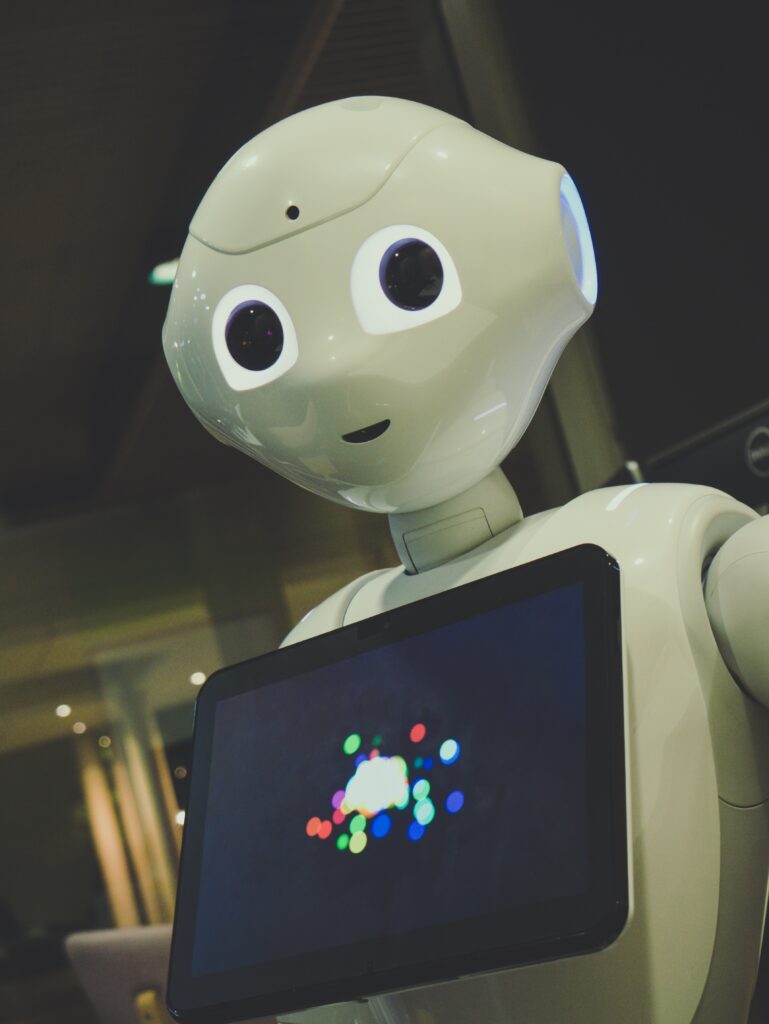
When first faced with the uncertainty of job security in the future, one may have a knee-jerk reaction to fight against the development of artificial intelligence, or maybe try to out-smart it, by developing more highly-technical skills. Both of these options, I believe, will eventually be losing battles as technological advancement will roar on whether or not we are fully ready for it. Perhaps, as Tyagarjan suggests in his piece, instead of fighting the advancement of artificial intelligence, humans can differentiate themselves by embracing their “humanness” through the development of soft skills.
Soft skills are the tools someone uses to interact with others in an effective manner, a concept entirely dependent on self-awareness. They include one’s emotional intelligence, their level of empathy, ability to work in a team, etc. These are the skills that will differentiate humans from artificial intelligence in the workforce moving forward.
Thus far in The Sustainable Innovation MBA program, there has been a large emphasis on the development of soft-skills between our Teamwork for Sustained Innovation class, The Leadership Seminar, and copious amounts of group work. Some of the hesitation in regard to entering into a non-traditional MBA is the larger mix of skills learned beyond the traditional aspects of a business education. While I have gained a great deal of value and personal development through our work so far, it’s hard to know what the business world is looking for when hiring. It is reassuring to see that the business community values the importance of soft skills, and their many applications in the workplace.
So, how do you stay competitive in a job market that is constantly becoming more automated? Lean into your humanness, strengthen your self and other-awareness, and in the words of Joe Fusco, “have a love affair with the truth.”
Photo by Owen Beard on Unsplash
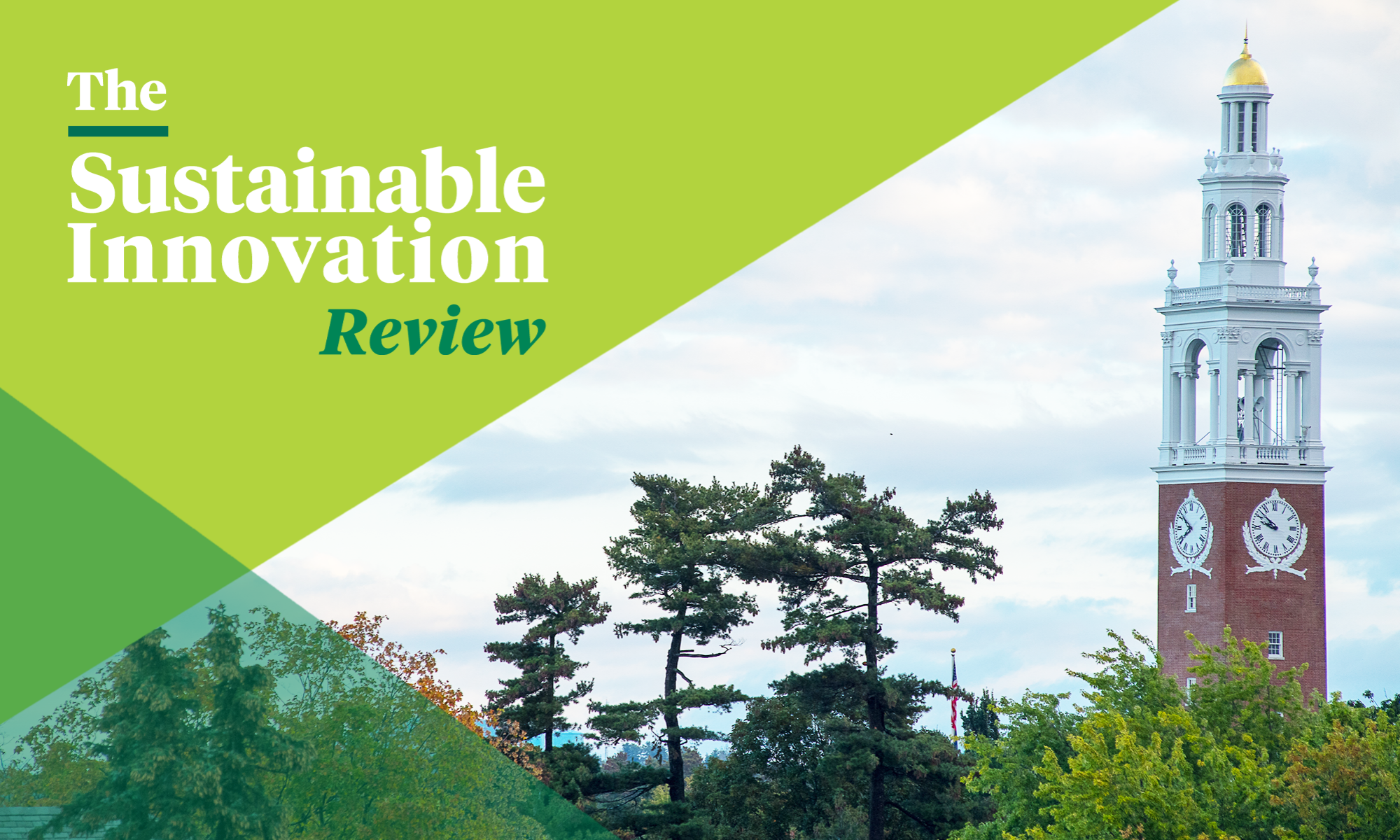
 It’s never been easier to order goods, food/groceries and socialize without ever leaving one’s home. As a society, we are moving more towards a world where we don’t have to do anything or go anywhere that we do not want to. Yet, according to the
It’s never been easier to order goods, food/groceries and socialize without ever leaving one’s home. As a society, we are moving more towards a world where we don’t have to do anything or go anywhere that we do not want to. Yet, according to the 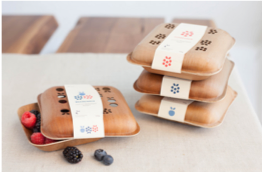 Sixty-three pounds of plastic, per person, ends up in landfills in the United States. An increased consumer demand for sustainability and the amount of waste coming from disposing packaging makes companies re-think their packaging. They start to incorporate new, sustainable materials and construction methods into their packaging to reduce their impact on the planet. Here’s four clever ideas for companies to reduce their carbon footprint by changing their packaging:
Sixty-three pounds of plastic, per person, ends up in landfills in the United States. An increased consumer demand for sustainability and the amount of waste coming from disposing packaging makes companies re-think their packaging. They start to incorporate new, sustainable materials and construction methods into their packaging to reduce their impact on the planet. Here’s four clever ideas for companies to reduce their carbon footprint by changing their packaging: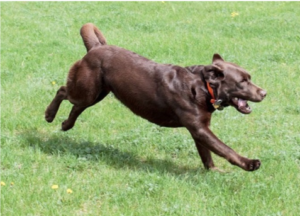 Fortunately for us at The Sustainable Innovation MBA, we don’t have to wait until we get home to experience this joy. Meet Willy Wonka, a 3-year-old chocolate lab who has bounded into Kalkin 110 as our 31st classmate during Professor Erik Monsen’s “Crafting the Entrepreneurial Business Model” class.
Fortunately for us at The Sustainable Innovation MBA, we don’t have to wait until we get home to experience this joy. Meet Willy Wonka, a 3-year-old chocolate lab who has bounded into Kalkin 110 as our 31st classmate during Professor Erik Monsen’s “Crafting the Entrepreneurial Business Model” class.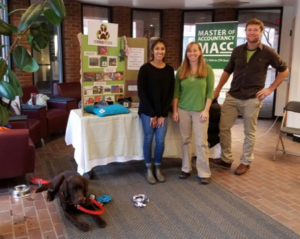 Willy Wonka doesn’t just demonstrate his value around the house. His “dad” is a professor of entrepreneurship, so naturally he has a few different jobs. As a certified therapy dog, Willy Wonka can be seen around campus during exam season providing stress relief to students. When he’s off-campus, you may be able to spot him at your local library, where children read to him. He loves a great story, but it’s hard to know exactly what his favorite genre is. He was even a tester for last year’s cohort’s recycled dog toy company, RePawposed.
Willy Wonka doesn’t just demonstrate his value around the house. His “dad” is a professor of entrepreneurship, so naturally he has a few different jobs. As a certified therapy dog, Willy Wonka can be seen around campus during exam season providing stress relief to students. When he’s off-campus, you may be able to spot him at your local library, where children read to him. He loves a great story, but it’s hard to know exactly what his favorite genre is. He was even a tester for last year’s cohort’s recycled dog toy company, RePawposed. What is pitching? It is the art and skill of describing one’s project, entrepreneurial venture, or oneself in the minimal amount of words that communicates your message to the listener. For startups and entrepreneurs, it is a skill that can be developed and honed over time with practice and feedback.
What is pitching? It is the art and skill of describing one’s project, entrepreneurial venture, or oneself in the minimal amount of words that communicates your message to the listener. For startups and entrepreneurs, it is a skill that can be developed and honed over time with practice and feedback.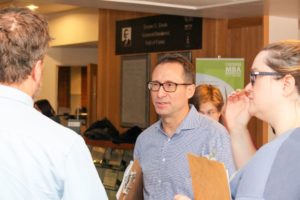 On the last day of November, the students of The Sustainable Innovation MBA hosted their annual Business Model Trade Show in the bustling lobby of Kalkin Hall. Visitors toured booths, sampled products and learned about the creative enterprises students have been working on throughout Module 2. For the students, it was a great opportunity to hone their elevator pitch and get feedback for their business ideas from noted visitors like venture capitalist and UVM alum
On the last day of November, the students of The Sustainable Innovation MBA hosted their annual Business Model Trade Show in the bustling lobby of Kalkin Hall. Visitors toured booths, sampled products and learned about the creative enterprises students have been working on throughout Module 2. For the students, it was a great opportunity to hone their elevator pitch and get feedback for their business ideas from noted visitors like venture capitalist and UVM alum 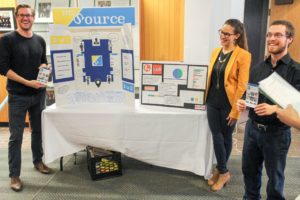 Many of the businesses focus on creating consumer goods that fill an unmet or underserved need in the marketplace. For instance, B3 is a consumer health company that offers simple, effective and environmentally friendly shampoo products made entirely from water, baking soda, and essential oils. Visitors to the trade show learned that the average shampoo contains more than 30 ingredients, many of which are known to cause adverse health and environmental effects. Another team of students with science and engineering backgrounds created Conscious Coffee Pods: small on the go servings of coffee in an algae-based pod that are shelf-stable, easily dissolved in water, and produce no packaging waste. Yet a third team created Flip Balm, an on the go algae-based sunscreen that attaches to a wristband made of recycled ocean plastic.
Many of the businesses focus on creating consumer goods that fill an unmet or underserved need in the marketplace. For instance, B3 is a consumer health company that offers simple, effective and environmentally friendly shampoo products made entirely from water, baking soda, and essential oils. Visitors to the trade show learned that the average shampoo contains more than 30 ingredients, many of which are known to cause adverse health and environmental effects. Another team of students with science and engineering backgrounds created Conscious Coffee Pods: small on the go servings of coffee in an algae-based pod that are shelf-stable, easily dissolved in water, and produce no packaging waste. Yet a third team created Flip Balm, an on the go algae-based sunscreen that attaches to a wristband made of recycled ocean plastic.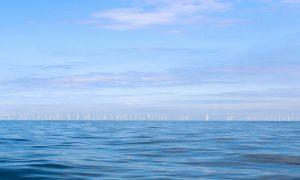 However, he faced a number of issues in executing the Cape Wind vision. First, Gordon immediately ran into extreme and well-funded opposition from rich property owners along the coast who did not want to see their ocean view marred by wind turbines. People from the Koch Brothers to Bunny Mellon to Walter Cronkite joined forces behind the Alliance to Protect Nantucket Sound (APNS): a NIMBY (not-in-my-backyard) group flush with cash and influence who set out to discredit Gordon and undercut the validity of the Cape Wind project. Second, Cape Wind faced prominent political opposition. The influence and connections of the APNS board members wreaked havoc for Cape Wind’s political standing and extensive lobbying efforts damaged the progress of what would have otherwise been a highly embraced endeavor. Finally, Cape Wind was an expensive undertaking – one whose fluctuations in cost had significant impact on its timeline.
However, he faced a number of issues in executing the Cape Wind vision. First, Gordon immediately ran into extreme and well-funded opposition from rich property owners along the coast who did not want to see their ocean view marred by wind turbines. People from the Koch Brothers to Bunny Mellon to Walter Cronkite joined forces behind the Alliance to Protect Nantucket Sound (APNS): a NIMBY (not-in-my-backyard) group flush with cash and influence who set out to discredit Gordon and undercut the validity of the Cape Wind project. Second, Cape Wind faced prominent political opposition. The influence and connections of the APNS board members wreaked havoc for Cape Wind’s political standing and extensive lobbying efforts damaged the progress of what would have otherwise been a highly embraced endeavor. Finally, Cape Wind was an expensive undertaking – one whose fluctuations in cost had significant impact on its timeline.